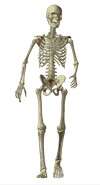Free Shipping On Orders Over $100
Optimized Positioning System (Prod 160319)
About Optimized Positioning System (Prod 160319)
The Optimized Positioning System, OPS™, consists of two parts:
- Step 1 – a dynamic, functional and patient specific pre-operative simulation This takes the patient through a range of daily activities to investigate the relationship between their spine, pelvis and femur. The process starts with medical imaging, capturing the unique anatomical geometry of each patient. Inputs are then analysed by an engineering team using specialized software. The simulation then models the predicted in vivo behaviour of the implants to optimize the orientation of the acetabular component. A surgeon report provides detailed information to assist in optimizing the outcome for each patient. Once the orientation is decided a unique guide is 3D printed.
- Step 2 – a patient specific delivery system Before reaming, the unique 3D guide is placed into the acetabulum enabling the chosen orientation to be precisely reproduced, irrespective of the patient’s position on the operating table. During cup impaction the surgeon uses a simple laser guided system to quickly and accurately achieve the optimized orientation.
Request Product Information
Disclaimer:
OrthopaedicLIST.com is a list of products and services. Every effort is made to keep this listing as accurate and current as possible. Companies and individuals are encouraged to notify us of errors and omissions. We will respond to such messages of correction in a timely fashion, as our workload permits.
We are non-judgmental of products listed. We are not in the business of evaluating products. We have not evaluated these products. We make no representations as to the quality, effectiveness, suitability or appropriateness of any of the products listed.
As an important component of the service function of OrthopaedicLIST.com, some products continue to be listed that are no longer manufactured and may not be available. We will identify them as such when possible. This allows users to find special instruments and/or components for removal, modification, and/or revision of those products.
OrthopaedicLIST.com is a list of products and services. Every effort is made to keep this listing as accurate and current as possible. Companies and individuals are encouraged to notify us of errors and omissions. We will respond to such messages of correction in a timely fashion, as our workload permits.
We are non-judgmental of products listed. We are not in the business of evaluating products. We have not evaluated these products. We make no representations as to the quality, effectiveness, suitability or appropriateness of any of the products listed.
As an important component of the service function of OrthopaedicLIST.com, some products continue to be listed that are no longer manufactured and may not be available. We will identify them as such when possible. This allows users to find special instruments and/or components for removal, modification, and/or revision of those products.



